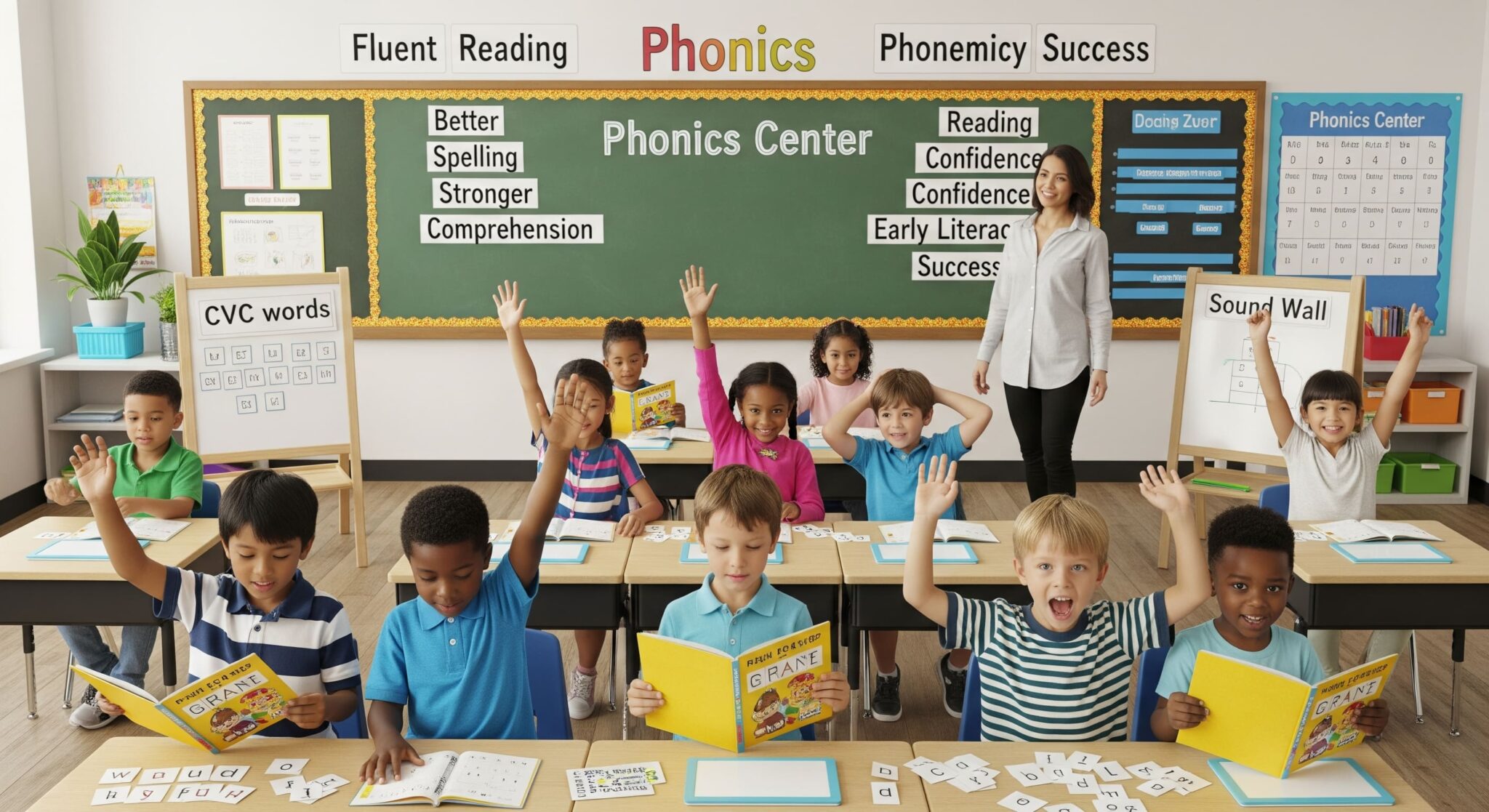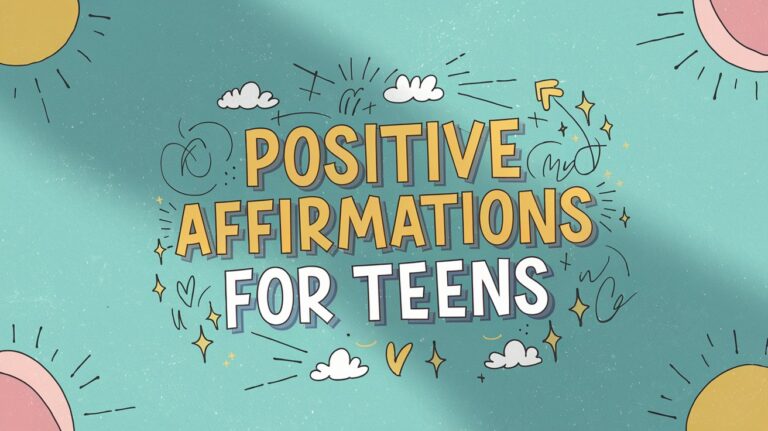Learning to read is one of the biggest milestones for young children. However, before children can start reading books independently, they require a solid foundation in how words and sounds work.
Two of the most critical skills that help with this are phonemic awareness and phonics.
They may sound similar, but they do very different jobs when it comes to reading.
Phonemic awareness is all about hearing the sounds in spoken words, while phonics is about connecting those sounds to letters on a page.
In this blog, we’ll break down what each one means, how they’re different, and why both are important in helping kids become confident readers.
Phonics: Building the Bridge from Sounds to Reading
Phonics is the connection between sounds and letters. It teaches children that the sounds they hear in words (phonemes) correspond to written letters or groups of letters (graphemes).
For instance, knowing that the letters “sh” make the /sh/ sound in “ship” is a phonics skill.
Phonics instruction is a combination of visual and auditory elements and typically follows phonemic awareness.
Children learn to decode words by sounding them out, a process that is essential for fluent reading and spelling.
Understanding Phonemic Awareness and Sound Recognition
Phonemic awareness is a child’s ability to hear, recognize, and play with the smallest sounds in spoken words; these tiny sounds are called phonemes.
It’s all about listening and doesn’t require reading or seeing any letters.
For example, when a child hears the sounds /c/ /a/ /t/ and blends them to say “cat,” that’s phonemic awareness in action.
Kids also show this skill when they break a word like “dog” into /d/ /o/ /g/, swap the /m/ in “mat” for /s/ to make “sat,” or notice when two words rhyme.
Building phonemic awareness early on helps lay the groundwork for reading success later, and it’s part of the broader set of skills known as phonological awareness.
Key Differences Between Phonics and Phonemic Awareness
Phonemic awareness and phonics are often confused. Here’s a simple way to see how they differ and work together.
| Aspect | Phonemic Awareness | Phonics |
|---|---|---|
| Modality | Auditory only | Involves both sound and print |
| Focus | Focuses on sounds in spoken words | Links sound like written letters |
| How They’re Taught | Taught through oral language activities and games | Taught using letters, texts, and written materials |
| Order of Learning | Learned that phonics comes first in reading development | Builds on phonemic awareness for decoding and spelling |
Understanding both helps build a stronger reading foundation by linking sounds to letters and spoken words to print.
Key Advantages of Phonics and Phonemic Awareness

Building strong phonics and phonemic awareness skills provides several key benefits for young readers:
- Improved Reading Fluency: Kids who can decode words easily read more smoothly and with better understanding.
- Stronger Spelling Skills: Recognizing sound patterns helps children spell words more accurately.
- Boosted Confidence: Mastery of these skills gives kids the tools to read new words independently.
- Better Comprehension: When decoding is automatic, the brain can focus on understanding the meaning, thereby improving comprehension.
- Early Literacy Success: Research shows these foundational skills are critical predictors of long-term reading achievement.
- Supports Diverse Learners: These strategies benefit all students, including English learners and those with reading challenges.
Together, these advantages show that strong phonics and phonemic awareness skills lay the foundation for a lifetime of confident and successful reading.
Why Both Skills Are Essential for Reading Success
Phonemic awareness and phonics are both critical pieces of the reading puzzle.
Phonemic awareness helps children understand that spoken words are made up of individual sounds, which lays the groundwork for connecting those sounds to letters later on.
It’s an essential early step that lays the groundwork for a strong listening foundation. Once that concept clicks, phonics comes into play by teaching kids how to match sounds with letters and blend them to read actual words.
Together, these skills help children become confident and fluent readers.
Research shows that students who are taught both phonemic awareness and phonics systematically tend to read more accurately, decode unfamiliar words more easily, and develop stronger comprehension.
Strategies for Teaching Phonemic Awareness and Phonics

Teaching these foundational reading skills requires a balanced approach that makes learning enjoyable while building solid competencies. The key is to use varied, engaging methods that cater to different learning preferences and developmental stages.
Together, these strategies make learning to read more fun, interesting, and effective for every child.
Phonemic Awareness Activities
These fun and simple activities help children tune into the sounds in spoken words, building a strong foundation for reading success.
- Sing rhyming songs to highlight similar ending sounds.
- Practice identifying beginning and ending sounds in words.
- Clap out syllables to build awareness of word parts.
- Blend and segment sounds to form or break apart words.
- Play “odd one out” to spot different beginning or ending sounds.
With regular practice, these playful exercises sharpen listening skills and make early literacy learning exciting and enjoyable.
Phonics Instruction Techniques
Phonics instruction bridges the gap between spoken language and printed text, helping kids connect letters with their corresponding sounds.
- Teach letter-sound relationships in a clear, step-by-step order.
- Use decodable books that match current phonics knowledge.
- Let kids explore letters with tactile tools like sandpaper or magnets.
- Play letter-sound matching games to boost recognition.
- Model how to build and decode words using letter tiles.
Integration Strategies
- Combine phonemic awareness warm-ups with phonics lessons for maximum impact.
- Use shared reading to model how phonics skills apply to real texts
- Provide differentiated instruction based on individual student needs and progress
- Create word walls that organize words by phonics patterns for easy reference
- Encourage invented spelling to help children apply phonics knowledge in writing
Combining both skill sets in reading lessons helps reinforce learning and supports different learning styles, creating a comprehensive foundation for reading success.
Debunking Popular Myths in Early Reading Instruction
A common misunderstanding is that phonemic awareness and phonics are the same thing. While they work together to build reading skills, they are very different.
Phonemic awareness involves hearing sounds, and phonics connects those sounds to the corresponding letters.
Another myth is that phonemic awareness is only needed in preschool. In truth, these skills remain essential throughout the early elementary years as children develop stronger reading abilities.
Some also think that if a child can memorize words, they don’t need phonics. But memorization isn’t enough; kids need to understand how words are built to read new ones with confidence.
Wrapping it Up
Learning to read is a necessary process, and phonemic awareness and phonics are two essential skills that support it every step of the way.
Phonemic awareness is all about hearing and playing with the sounds in words without needing to know the letters.
Phonics comes next, helping kids match those sounds with letters on a page. Together, they make reading feel less confusing and more exciting.
As a parent, teacher, or tutor, your support in building these skills makes a huge difference. With fun games, patience, and practice, you can help a child develop into a confident and joyful reader.
And remember, every great reader starts with just one sound and someone who believed they could learn it.


















